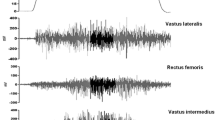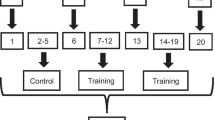Abstract
Participation in exercise programs is heartily recommended for older adults since the level of physical fitness directly influences functional independence. The aim of this present study was to investigate the effects of supervised Pilates exercise training on the physical function, hypothesizing that a period of Pilates exercise training (PET) can increase overall muscle strength, body composition, and balance, during single and dual-task conditions, in a group of post-menopausal women. Twenty-five subjects, aged 59 to 66 years old, were recruited. Eligible participants were assessed prior and after 3 months of PET performed twice per week. Muscular strength was evaluated with handgrip strength (HGS) test, 30-s chair sit-to-stand test (30CST), and abdominal strength (AST) test. Postural control and dual-task performance were measured through a stabilometric platform while dynamic balance with 8 ft up and go test. Finally, body composition was assessed by means of dual-energy X-ray absorptiometry. Statistically significant improvements were detected on HGS (+8.22 %), 30CST (+23.41 %), 8 ft up and go test (−5.95 %), AST (+30.81 %), medio-lateral oscillations in open eyes and dual-task condition (−22.03 % and −10.37 %). Pilates was effective in increasing upper body, lower body, and abdominal muscle strength. No changes on body composition were detected. Results on this investigation indicated also that 12-week of mat Pilates is not sufficient to determine a clinical meaningful improvement on static balance in single and dual-task conditions.
Similar content being viewed by others
References
Aladro-Gonzalvo AR, Machado-Diaz M, Moncada-Jimenez J, Hernandez-Elizondo J, Araya-Vargas G (2012) The effect of Pilates exercises on body composition: a systematic review. J Bodyw Mov Ther 16:109–114. doi:10.1016/j.jbmt.2011.06.001
Baumgartner RN et al. (1998) Epidemiology of sarcopenia among the elderly in New Mexico. Am J Epidemiol 147:755–763
Bergamin M, Gobbo S, Zanotto T, Sieverdes JC, Alberton CL, Zaccaria M, Ermolao A (2014) Influence of age on postural sway during different dual-task conditions. Front Aging Neurosci 6:271. doi:10.3389/fnagi.2014.00271
Bird ML, Fell J (2014) Positive long-term effects of Pilates exercise on the aged-related decline in balance and strength in older, community-dwelling men and women. J Aging Phys Act 22:342–347. doi:10.1123/japa.2013-0006
Bird ML, Hill KD, Fell JW (2012) A randomized controlled study investigating static and dynamic balance in older adults after training with Pilates. Arch Phys Med Rehabil 93:43–49. doi:10.1016/j.apmr.2011.08.005
Bullo V, Bergamin M, Gobbo S, Sieverdes JC, Zaccaria M, Neunhaeuserer D, Ermolao A (2015) The effects of Pilates exercise training on physical fitness and wellbeing in the elderly: a systematic review for future exercise prescription. Prev Med 75:1–11
Cleland CL, Hunter RF, Kee F, Cupples ME, Sallis JF, Tully MA (2014) Validity of the global physical activity questionnaire (GPAQ) in assessing levels and change in moderate-vigorous physical activity and sedentary behaviour. BMC Public Health 14:1255. doi:10.1186/1471-2458-14-1255
Cohen J (1988) Statistical power for the behavioral sciences. Erlbaum, Hillsdale
Folstein MF, Folstein SE, McHugh PR (1975) "Mini-mental state". A practical method for grading the cognitive state of patients for the clinician. J Psychiatr Res 12:189–198
Garatachea N, Lucia A (2013) Genes, physical fitness and ageing. Ageing Res Rev 12:90–102. doi:10.1016/j.arr.2012.09.003
Gobbo S, Bergamin M, Sieverdes JC, Ermolao A, Zaccaria M (2014) Effects of exercise on dual-task ability and balance in older adults: a systematic review. Arch Gerontol Geriatr 58:177–187. doi:10.1016/j.archger.2013.10.001
Granacher U, Gollhofer A, Hortobagyi T, Kressig RW, Muehlbauer T (2013) The importance of trunk muscle strength for balance, functional performance, and fall prevention in seniors: a systematic review. Sports Med 43:627–641. doi:10.1007/s40279-013-0041-1
Irez GB, Ozdemir RA, Evin R, Irez SG, Korkusuz F (2011) Integrating Pilates exercise into an exercise program for 65+ year-old women to reduce falls. J Sports Sci Med 10:105–111
Johnson L, Putrino D, James I, Rodrigues J, Stell R, Thickbroom G, Mastaglia FL (2013) The effects of a supervised Pilates training program on balance in Parkinson’s disease. Adv Park Dis 2:58–61
Kim J, Sapienza CM (2005) Implications of expiratory muscle strength training for rehabilitation of the elderly: tutorial. J Rehabil Res Dev 42:211–224
Kucukcakir N, Altan L, Korkmaz N (2013) Effects of Pilates exercises on pain, functional status and quality of life in women with postmenopausal osteoporosis. J Bodyw Mov Ther 17:204–211. doi:10.1016/j.jbmt.2012.07.003
Lanska DJ, Goetz CG (2000) Romberg’s sign: development, adoption, and adaptation in the 19th century. Neurology 55:1201–1206
Latey P (2001) The Pilates method: history and philosophy. J Bodyw Mov Ther 5:275–282
Mathiowetz V, Rennells C, Donahoe L (1985) Effect of elbow position on grip and key pinch strength. J Hand Surg Am 10:694–697
Mokhtari M, Nezakatalhossaini M, Esfarjani F (2013) The effect of 12-week Pilates exercises on depression and balance associated with falling in the elderly. Procedia Soc Behav Sci 70:1714–1723
Muir SW, Berg K, Chesworth B, Klar N, Speechley M (2010) Quantifying the magnitude of risk for balance impairment on falls in community-dwelling older adults: a systematic review and meta-analysis. J Clin Epidemiol 63:389–406. doi:10.1016/j.jclinepi.2009.06.010
Newell D, Shead V, Sloane L (2012) Changes in gait and balance parameters in elderly subjects attending an 8-week supervised Pilates programme. J Bodyw Mov Ther 16:549–554. doi:10.1016/j.jbmt.2012.02.002
Patel KV et al. (2014) High prevalence of falls, fear of falling, and impaired balance in older adults with pain in the United States: findings from the 2011 National Health and Aging Trends Study. J Am Geriatr Soc 62:1844–1852. doi:10.1111/jgs.13072
Patti A et al. (2015) Effects of Pilates exercise programs in people with chronic low back pain: a systematic review. Medicine (Baltimore) 94:e383. doi:10.1097/MD.0000000000000383
Petrofsky JS, Cuneo M, Dial R, Ak P, Hill J (2005) Core strengthening and balance in the geriatric population. J Appl Res 5:423–433
Plachy J, Kovach M, Bognar J (2012) Improving flexibility and endurance of elderly women through a six-month training programme. Hum Mov 13:22–27
Rikli RE, Jones CJ (1999) Development and validation of a functional fitness test for a community-residing adults. J Aging Phys Act 7:129–161
Runge M, Rittweger J, Russo CR, Schiessl H, Felsenberg D (2004) Is muscle power output a key factor in the age-related decline in physical performance? A comparison of muscle cross section, chair-rising test and jumping power. Clin Physiol Funct Imaging 24:335–340. doi:10.1111/j.1475-097X.2004.00567.x
Seidler RD et al. (2010) Motor control and aging: links to age-related brain structural, functional, and biochemical effects. Neurosci Biobehav Rev 34:721–733. doi:10.1016/j.neubiorev.2009.10.005
Tombaugh TN, McIntyre NJ (1992) The mini-mental state examination: a comprehensive review. J Am Geriatr Soc 40:922–935
Wollesen B, Voelcker-Rehage C (2013) Training effects on motor–cognitive dual-task performance in older adults. Eur Rev Aging Phys Act. doi:10.1007/s11556-013-0122-z
World Health Organization (2007) WHO global report on falls prevention in older age. World Health Organization, Geneva
Yardley L, Gardner M, Leadbetter A, Lavie N (1999) Effect of articulatory and mental tasks on postural control. Neuroreport 10:215–219
Yassierli NMA, Iridiastadi H, Wojcik LA (2007) The influence of age on isometric endurance and fatigue is muscle dependent: a study of shoulder abduction and torso extension. Ergonomics 50:26–45. doi:10.1080/00140130600967323
Zanotto T, Bergamin M, Roman F, Sieverdes JC, Gobbo S, Zaccaria M, Ermolao A (2014) Effect of exercise on dual-task and balance on elderly in multiple disease conditions. Curr Aging Sci 7:115–136
Acknowledgments
We are particularly grateful to Ms. Valentina Casarotto, who led the mat Pilates program, Dr. Roberto Benetti for the statistical support, and Mr. Walter Gomiero for the laboratory and technical assistance. This investigation did not receive any specific grant from any funding agency in the public, commercial, or not-for-profit sector. The authors declare no conflicts of interest that could prejudice the impartiality of the research.
Author information
Authors and Affiliations
Corresponding author
About this article
Cite this article
Bergamin, M., Gobbo, S., Bullo, V. et al. Effects of a Pilates exercise program on muscle strength, postural control and body composition: results from a pilot study in a group of post-menopausal women. AGE 37, 118 (2015). https://doi.org/10.1007/s11357-015-9852-3
Received:
Accepted:
Published:
DOI: https://doi.org/10.1007/s11357-015-9852-3




